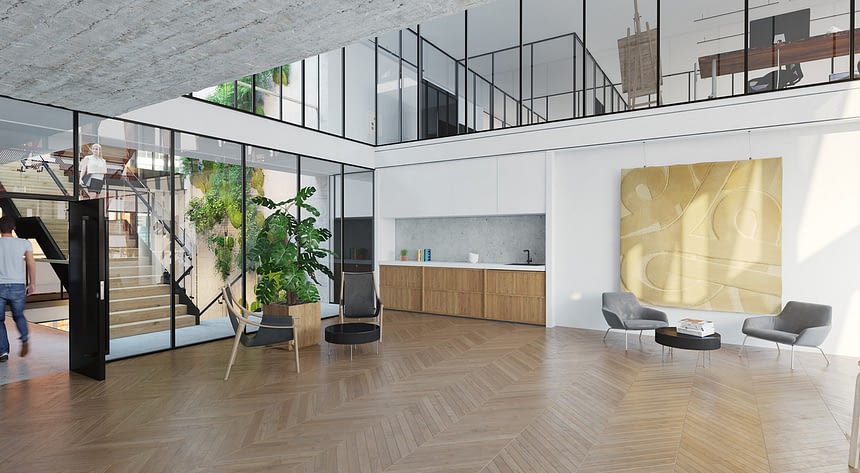Can the office be our happy place?
Tenants’ health and satisfaction are the second phase of sustainability, says Finland’s first WELL Accredited Professional, Robbie McGrath.
WELL™ is the first global building rating system to focus exclusively on the ways that buildings can improve our comfort, drive better choices, and generally enhance our health and wellness. Issued by The International WELL Building Institute (IWBI™), the WELL v2 certificate covers ten core concepts of health, and over 100 features prioritizing holistic well-being. Qualities like air, light, movement, materials and sound are evaluated to guarantee the best possible work environment.
“WELL offers a holistic approach to work environments. As LEED and BREEAM focus more on the environmental impact of buildings, WELL brings stakeholders together early on to design how the building can benefit the users as well. With WELL, attracting and retaining tenants through increasing their health and productivity is key. I believe this is the second phase of sustainability”, says Robbie McGrath, Senior Adviser at Newsec and Finland’s first WELL Accredited Professional (WELL AP).
Swing House among the first WELL buildings in Finland
A seven-story green wall with fresh herbs, a stress-reducing sound environment and circadian lighting are among the innovative solutions at Swing House, an office building set to be complete by the end of 2021 between Keilaniemi and Otaniemi in Espoo. Swing House is accompanied by an another, already complete office building and a hotel that will be ready in 2022. Owner Elo Mutual Pension Insurance Company will apply for the WELL v2 Gold certification for the new office building, making Swing House one of the first WELL certified buildings in Finland.
“At the moment there are three certified WELL projects in Finland and ten more to be certified in the next year. In the Nordics there are about 35 WELL projects, and globally speaking the number is around 4,500”, McGrath says.
With WELL, attracting and retaining tenants through increasing their health and productivity is key. I believe this is the second phase of sustainability
Giant green wall as heart and lungs of the building
In Swing House, the biggest wow effect is provided by the massive green wall adjoining the central staircase. In addition to air-purifying plants, the wall will grow an array of fresh herbs for the restaurant to use. The individually designed soundscape for each floor reduces stress and motivates tenants to favor stairs. Circadian lighting – going from a bright white in the morning towards a mellow yellow in the afternoons – keeps you going in the long and dark Nordic winter. A dedicated separate cycle ramp entrance provides safe access and premium shower facilities cater to cyclists, emphasizing the focus on sustainable transport options for the building.
“At Swing House, WELL has been considered right from the beginning, which made it possible to include some of the more aspirational elements, like bringing nature into the building, in addition to the basic things that affect people in indoor spaces: air quality, lighting and thermal comfort. Keeping connected to nature and adjusting the light to give you energy are great examples of building solutions that improve well-being”, McGrath says.
WELL is the way of the future
The shift from WELL v1 to v2 in 2018 has made the scoring system more flexible, encouraging more building owners to seek the certification. The mandatory preconditions have been reduced from around 40 to 20, and the optimizations have increased from around 60 to 90.
“In Europe there was a significant increase when the second version, WELL v2, was launched in 2018; we went from 270 projects to 1,600 in six months. WELL is definitely a growing trend”, McGrath says.
In a decade, WELL might be as big as LEED and BREEAM. Already it offers building owners and tenants a competitive edge.
“From the owner’s point of view, WELL is a great way to show you have a good building that has been designed for holistic well-being, including optimal indoor environmental quality and sustainable transport. But the biggest payoff is for the tenants: they get a work environment that improves health, wellbeing and productivity and helps them succeed in their ventures.”




